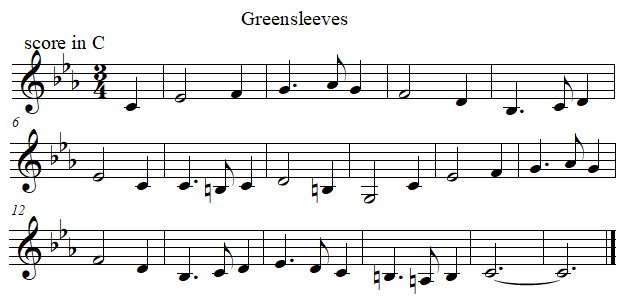Learn how to transpose a melody or a score from B♭ to C. This transposition can be useful for B♭ clarinet, B♭ trumpet, B♭ Saxophones.
How to transpose from B♭ to C
Melody to transpose from B♭ to C
Below is a melody we want to transpose from B♭ to C:

Transposing this melody for non-transposing instrument
The method is the same described in Transposition:
- From where to where?: I am an non-transposing instrument (like the flute or the piano) and I want to play a B♭ score, and I know that B♭ clarinet, B♭ trumpet, or soprano saxophone are sounding lower than written (read Transposing instruments).
- What interval?: I must play all a descending major second lower.
- Initial key?: Here the key is F Major
- New key?: Subtracting a descending major second to F Major produce E♭ Major
- Key Signature Identification?: The new key signature for E♭ Major is 3 flats (3♭)
- Which clef to use (sight-reading)?: Here you must read the music score with a tenor clef
Result:

You should be careful with accidentals:
- Bar 7,8 and 15: C♯ become B♮
- Bar 15: B♮ become A♮


